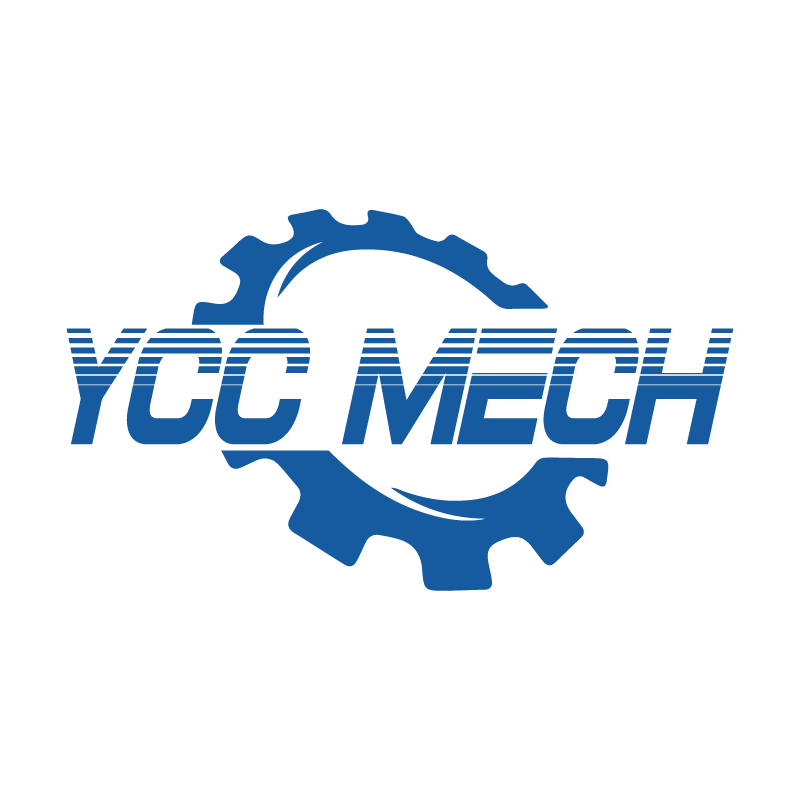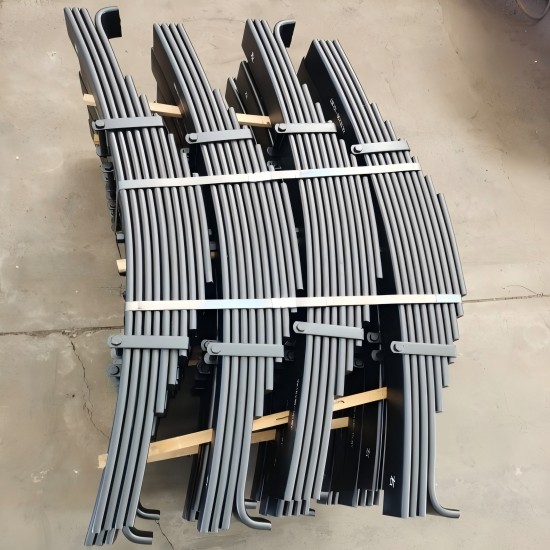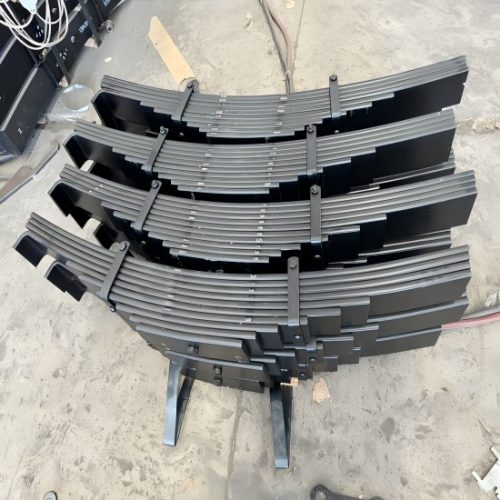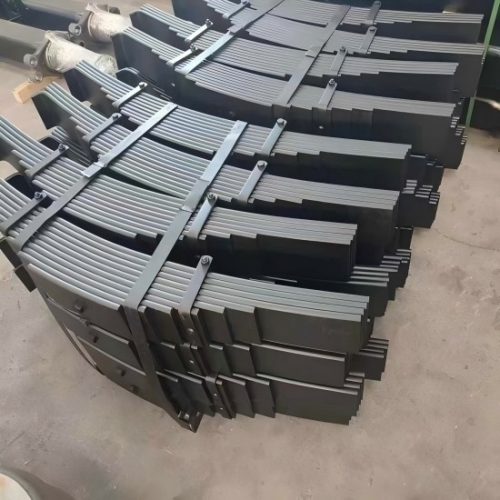Description
Description:
The main manufacturing process of trailer leaf springs is: cutting → drilling → rolling and cutting → correction → first ear → end grinding → quenching → tempering → shot peening → flaw detection → painting → testing.
Truck trailer leaf springs are subjected to alternating bending stress during work, so the surface quality of leaf springs is very high. Notches, cracks, folds and scars are not allowed on the surface. Even if there are minor defects and damage on the surface, stress concentration will occur, which can easily lead to leaf spring breakage.
The leaf spring material has a high carbon content, and contains silicon and manganese alloy elements, which has high hardenability. The leaf spring is a key vibration reduction component of the trailer, which bears its own weight and load. Therefore, the application of trailer leaf spring materials is very important.
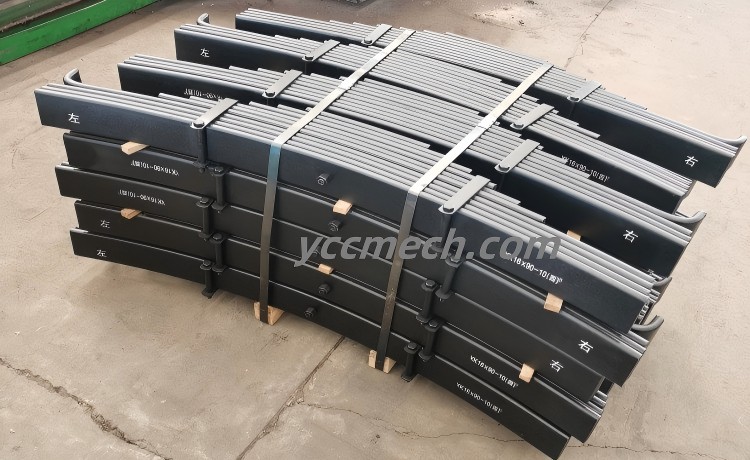 Good price leaf spring for sale
Good price leaf spring for sale
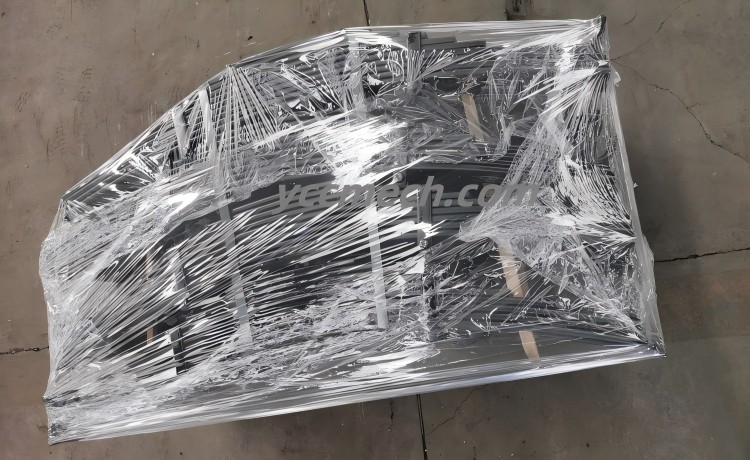 High quality semi trailer leaf spring
High quality semi trailer leaf spring
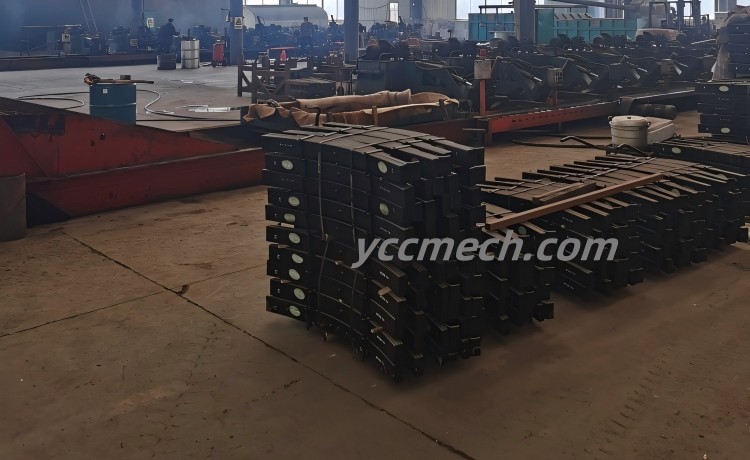 China’s well-known spare parts manufacturer — Ycc Mech
China’s well-known spare parts manufacturer — Ycc Mech
Advantages:
1. Selection of leaf spring materials
Carbon spring steel is rarely used in automobiles due to its low hardenability. Manganese steel has good hardenability, but is prone to quenching cracks and temper brittleness. Therefore, silicon manganese steel is the most widely used material.
2. Shot blasting quality
Shot blasting not only produces a strengthening layer on the surface of the spring, but also removes tiny defects and decarburization on the surface of the spring, reduces stress concentration, etc. The difference in shot peening quality is also one of the reasons for the difference in the service life of leaf springs.
3. Raw material defects
① Impurities greatly reduce the fatigue strength of leaf springs.
② Banded structure seriously reduces the mechanical properties of steel.
4. Heat treatment defects
Surface decarburization, quenching underheating structure, feathery structure, etc. will reduce the fatigue strength of automobile leaf springs.
5. Usage level
The service life of leaf springs in vehicles with cautious drivers is much higher than that of leaf springs in vehicles with poor road conditions, serious overloading, and rough driving by drivers.
